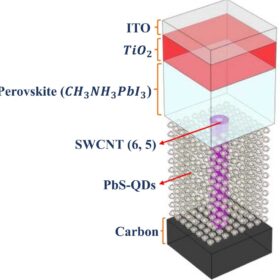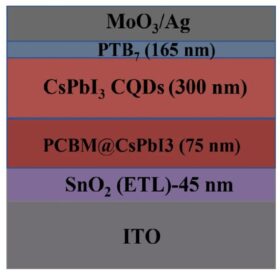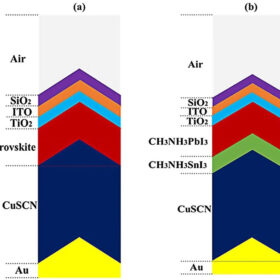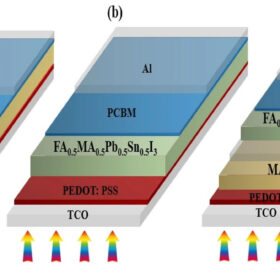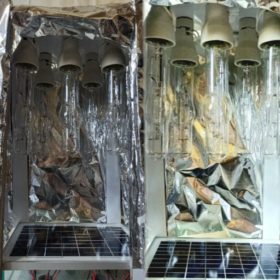Photovoltaics for hydroponic greenhouses
Researchers in Iran have investigated the operation of a real solar-powered greenhouse in the Alborz province and have found that only 4% of the greenhouse’s roof needs to be covered with PV modules to meet demand for lighting and pumping water.
Improving perovskite solar cell performance with conductive adhesive ink
Conceived by researchers from Iran, the new conductive adhesive ink is made of polymethyl methacrylate (PMMA) and is used as an interlayer between the cell’s hole transport layer and carbon foil. It reportedly ensures higher cell stability while also providing remarkable efficiency.
Solar-assisted heat pumps vs. air-source heat pumps
A group of researchers in Iran has analyzed the coefficient of performance and the energy consumption of a solar-assisted heat pumps and an air-source heat pumps and has found that three factors are crucial to determine their annual performance – irradiance changes, ambient temperature, and wind speed.
Photovoltaics may increase safety in nuclear power plants
New research from Iran shows that PV installations linked to battery storage may help prevent accidents and increase safety in nuclear power plants by acting as an emergency load. The scientists proposed a system design that considers both technical and economics factors.
Perovskite PV cell hits 19.9% efficiency with single-walled carbon nanotube
Iranian researchers have improved perovskite solar cell efficiency by using a single-walled carbon nanotube as a hole transport layer surrounded by lead sulfide colloidal quantum dots.
Perovskite quantum dot solar cells on the path to achieve 30% efficiency
Researchers in Iran have identified new ways to design perovskite quantum dot solar cells via a series of simulations. They investigated, in particular, how the perovskite absorbers can be gauged in order to enhance their electro-optical properties.
New perovskite solar cell design with silicon dioxide anti-reflector layer
Researchers in Iran have designed a new light trapping (LT) structure for perovskite solar cells that reportedly achieves optimal light absorption without impacting the electrical properties of the cells. The key element of the device is an anti-reflector layer based on silicon dioxide (SiO2) that improves light harvesting and charge extraction performance.
Novel design for inverted all-perovskite bilayer solar cells with 24.83% efficiency
An international research team has crafted an innovative solar cell design. By employing a top absorber consisting of methylammonium lead iodide (MAPbI3), a lead-halide perovskite, and a bottom absorber composed of FA0.5MA0.5Pb0.5Sn0.5I3, a perovskite material, the cell maximizes light absorption across a broad spectrum.
Concentrating photovoltaics for agricultural applications
A research team has studied the potential of using concentrating photovoltaics in agriculture and found that it offers advantages in terms of energy yield and de-shading compared to conventional photovoltaics. However, the higher costs must be carefully considered.
Cooling solar panels with cold steam from ultrasonic thermoelectric generators
Iranian researchers have looked at how ultrasonic thermoelectric generators could be used to lower the operating temperature of solar modules. Their new system can generate cold steam via ultrasonic piezoelectrics in a simple batch system.




